The 19th century was a remarkable period in horse history, characterized by the prominence of impressive breeds known for their enormous sizes. As we gallop down memory lane, let’s explore the top ten heaviest horses from that era, appreciating the magnificence and strength of these gentle giants.
1. Shire Horse

Regarded as one of the heaviest horse breeds ever, the Shire traces its roots back to medieval England. These magnificent creatures were primarily bred to carry heavy armor in battle, and by the 19th century, they were pulling massive loads in urban settings. The heaviest recorded Shire from the 19th century weighed in at an astonishing 3,360 lbs (1,524 kg).
Aren’t you curious about how they’d have looked carrying all that weight? With their iconic feathered feet and gentle demeanor, they’re not just heavy but also incredibly graceful.
2. Percheron
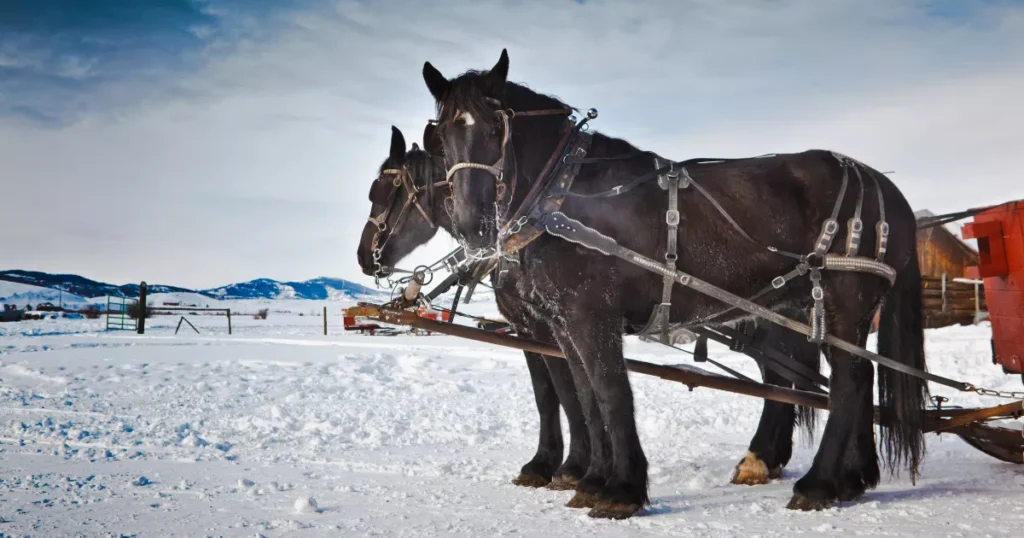
Ah, the Percheron! Originating from the Perche Valley in western France, these horses are the epitome of strength and endurance. They found their niche working in French farmlands and were later used as warhorses. Their robust build and easy-going temperament made them a favorite. In the 19th century, a hefty Percheron tipped the scales at around 2,600 lbs (1,179 kg). That’s one big horse, huh?
3. Belgian Draft Horse
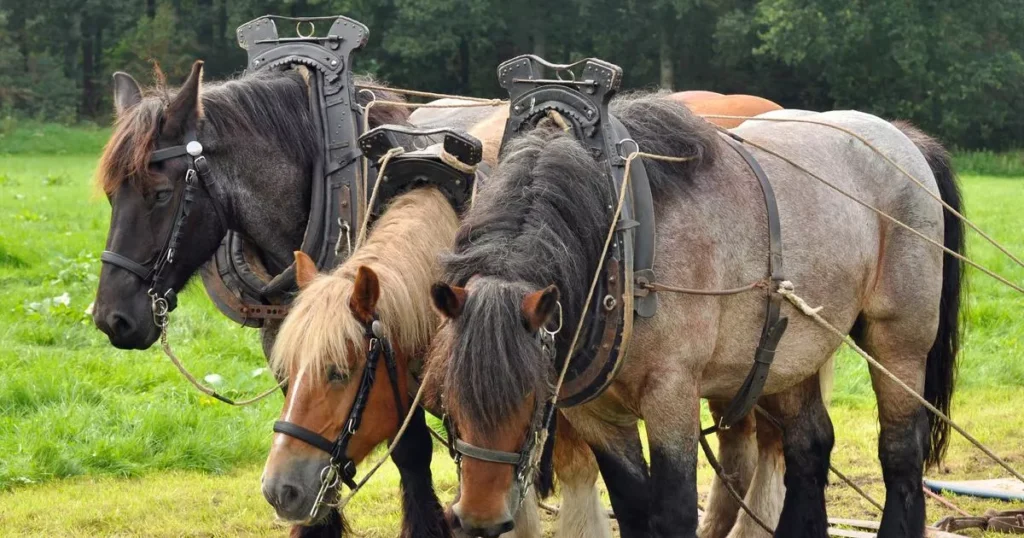
Often simply called “Belgians,” these equine giants hail from the Brabant region of modern Belgium. Their robust physique was primarily used for farm work, forestry, and pulling heavy cargo. The 19th century witnessed a Belgian Draft weighing a whopping 3,200 lbs (1,451 kg). Imagine the awe of seeing such a mammoth beast working the fields!
4. Clydesdale
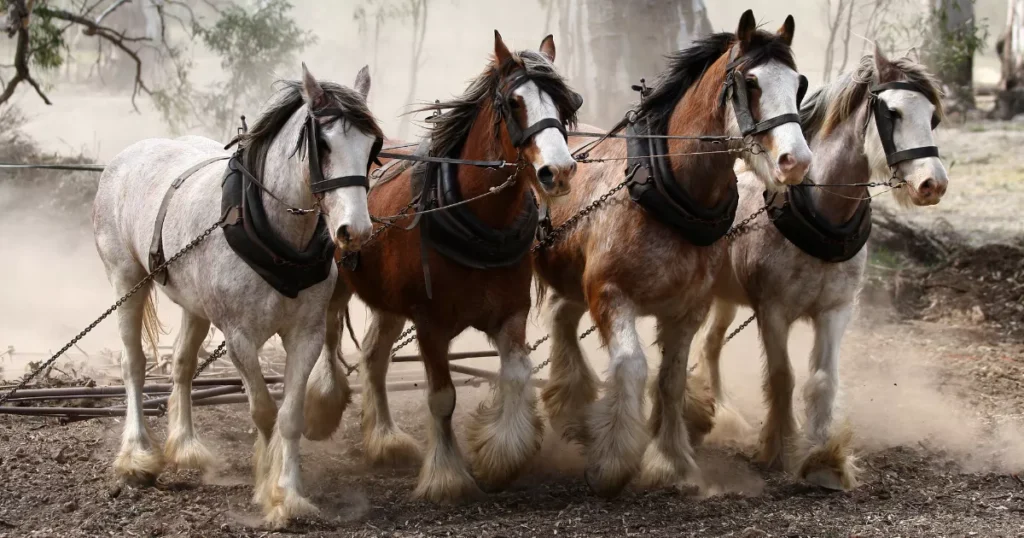
Originating from the Clyde Valley in Scotland, Clydesdales were indispensable to 19th-century farming and industrial transport. With their flashy “feathering” (long hair) on their legs and their distinctive gait, they became an icon. The heaviest Clydesdale from that era registered at approximately 2,200 lbs (998 kg). Their intriguing history and memorable appearance make them stand out even today.
5. Suffolk Punch
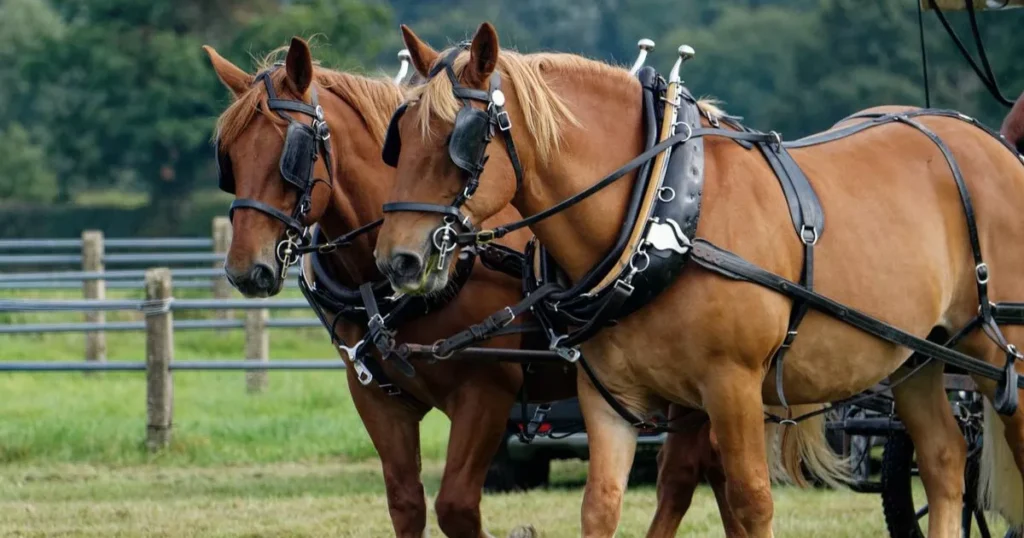
Distinct for their chestnut color, the Suffolk Punch is one of the oldest horse breeds of England. By the 19th century, they were renowned for their stamina and hard work on farms. Weighing up to 2,400 lbs (1,089 kg), their relatively compact build set them apart from their bulkier cousins. I wonder, given their size, just how much hay they could munch in one sitting?
6. Dutch Draft Horse
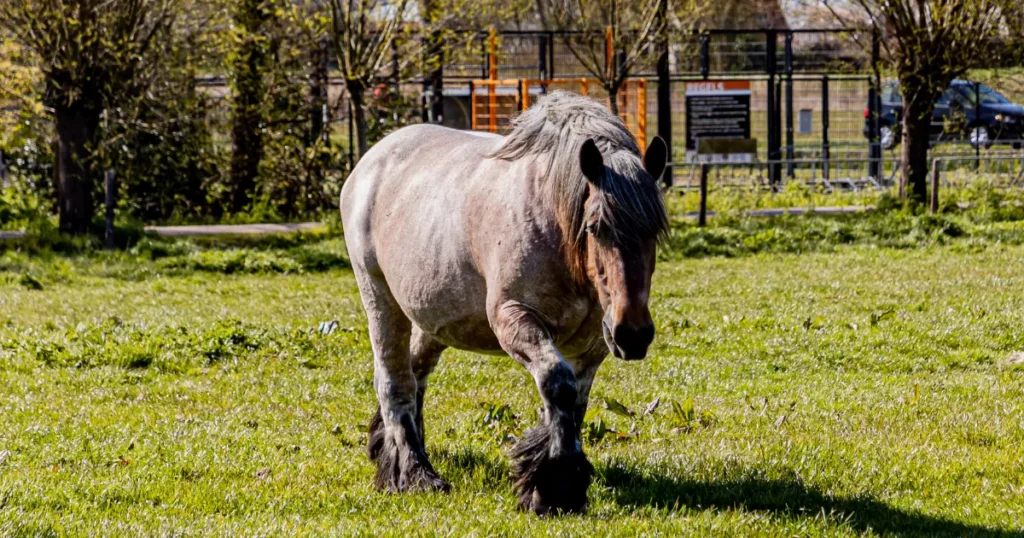
Known as Holland’s heavy lifter, the Dutch Draft Horse descended from the mighty Ardennes. These horses, characterized by their roan colors, became integral to agriculture and transportation in the Netherlands. The heaviest recorded in the 19th century reached a staggering 2,500 lbs (1,134 kg). Considering their weight, they were surprisingly agile!
7. Boulonnais Horse
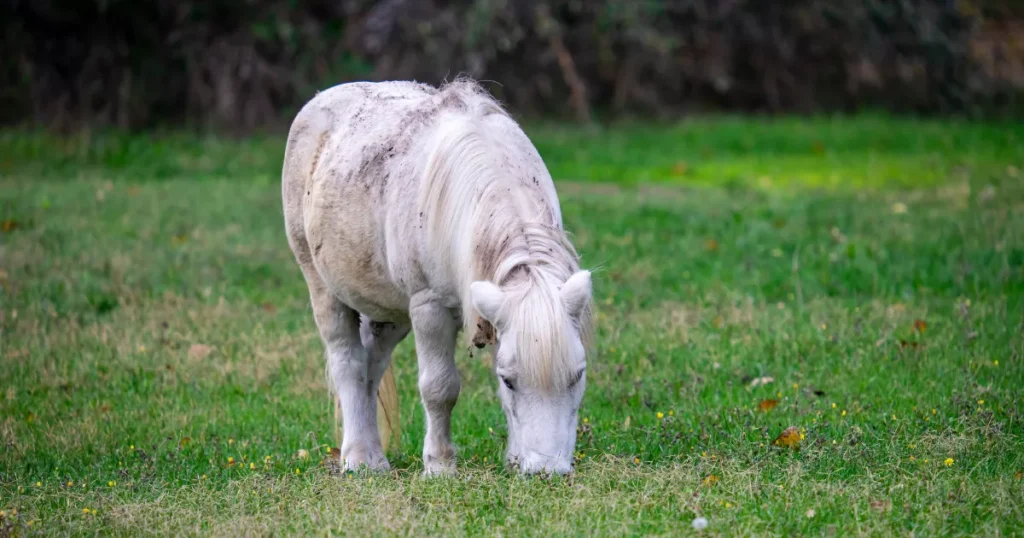
Dubbed the “White Marble Horse” because of their often grey coat, the Boulonnais Horse is a French breed primarily used for heavy draft and farm work. By the 19th century, these horses, weighing around 2,200 lbs (998 kg), became pivotal in the development of many other European draft breeds.
8. Russian Heavy Draft
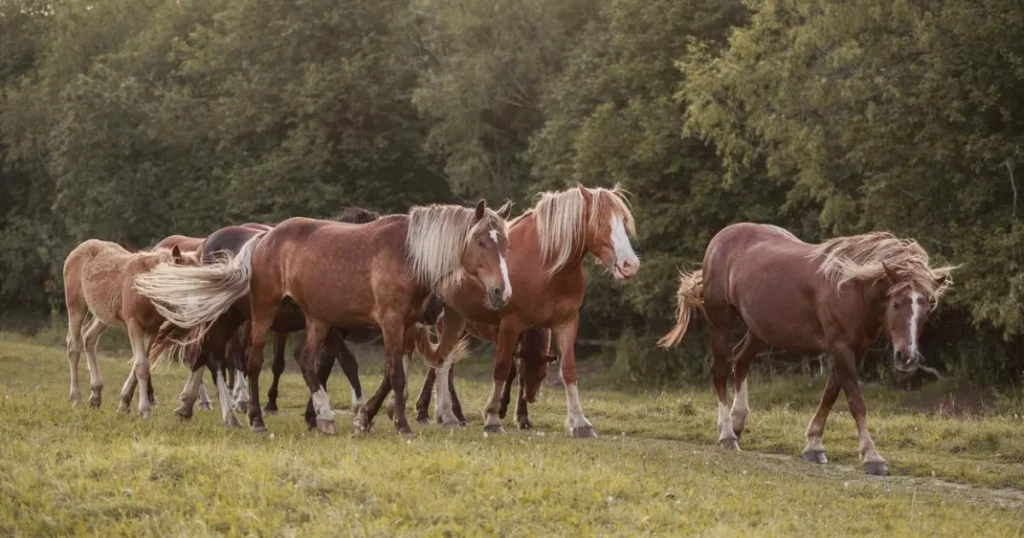
Venturing to the colder parts of the world, we find the Russian Heavy Draft. Bred in the late 19th century, they quickly gained prominence due to their strength and ability to work in colder climates. Clocking in at about 1,800 lbs (816 kg), they might not be the heaviest on this list, but their contribution to farming in colder regions is noteworthy.
9. Ardennes Horse
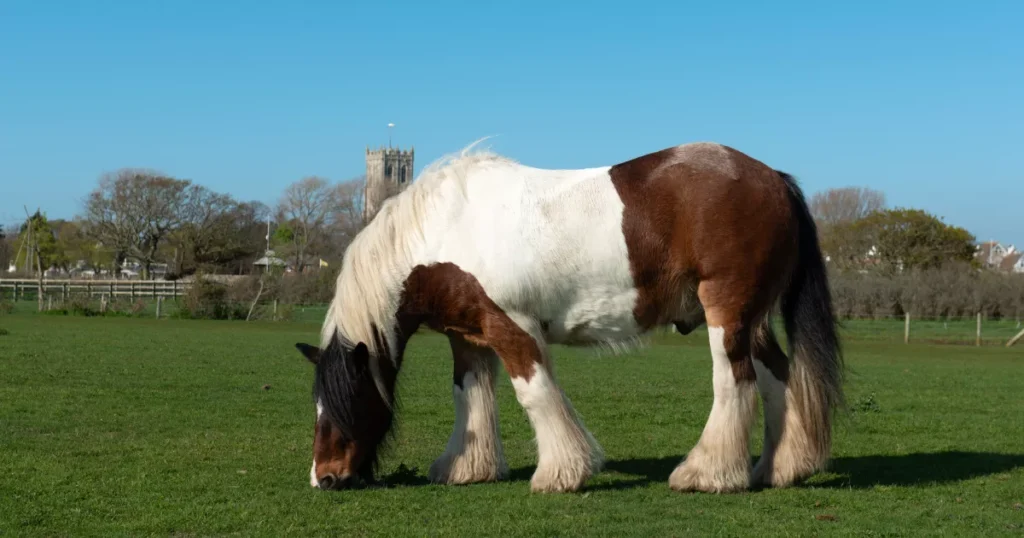
A veteran breed, the Ardennes Horse has history spanning two millennia, tracing back to Ancient Rome! They hail from the Ardennes region, spanning Belgium, Luxembourg, and France. Renowned for their muscle and might, the 19th century saw them weighing in at about 2,100 lbs (953 kg). It’s astounding to think of their rich lineage and history.
10. Jutland Horse
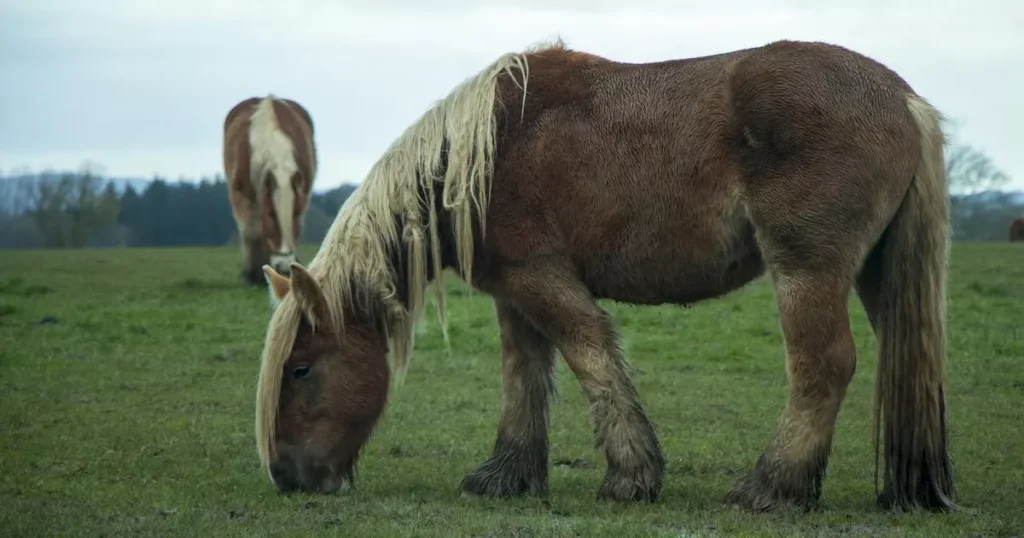
Last but not least, the Jutland Horse from Denmark. Recognized for their reddish-brown coat and calm temperament, they were crucial for agriculture and transportation in Denmark. Their size? Well, they reached up to 2,000 lbs (907 kg) in the 19th century. A testament to their significance, they’re still cherished in Denmark today.
The 19th century was a golden era for heavy horses, with their grandeur and might at the forefront of many societal developments. As we reminisce about their contributions, let’s also appreciate the legacy they’ve left behind. From pulling heavy carts to mesmerizing us with their sheer size, these breeds certainly left an indelible hoof print in history!